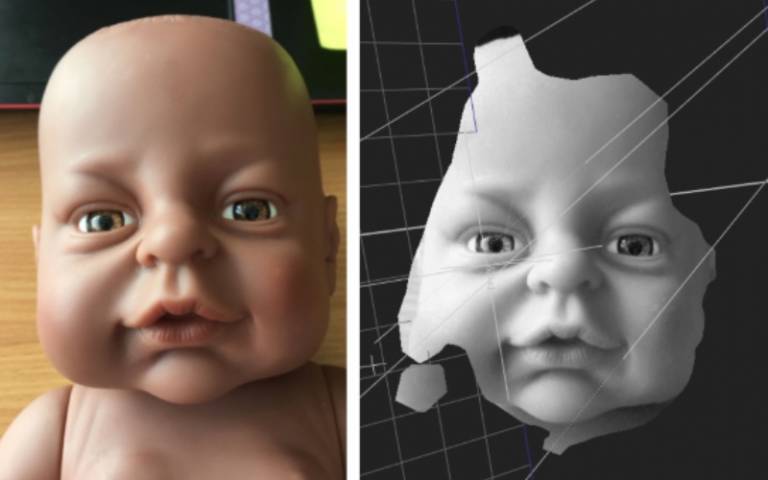Two Year 11 work experience students describe their experience of working in the department
Amy Leung and Sejal Singh, two Year 11 students from Henrietta Barnett School in North London, reflect on their experiences learning how to use 'NUKE', a compositing software, to develop 3D models.

10 September 2018
As students who recently finished their GCSEs at Henrietta Barnett School, we did a week of work experience at UCL’s Department of Medical Physics and Biomedical Engineering. Our work experience was based around learning how to use the software ‘NUKE’. NUKE is a compositing software used mainly in the film industry, for editing scenes and generating VFX.
However, NUKE has viability as a software to be used in medical physics, as it can be used to develop detailed 3D models of objects from a series of 2D images that can then be studied and used for research. Our task was to learn how to use NUKE from scratch, acting as test subjects to determine how easy the software would be for future students to use.
We spent a little time following pre-made video tutorials and learning the basics of the software. We started simply, developing a 3D model of a piece of iron slag, but quickly moved on to more complex objects. After following the videos to model the iron slag, we then attempted to independently model the head of a baby doll. Although we ran into a few hurdles and had to do some troubleshooting, we ultimately made an accurate and detailed 3D model of the doll’s head (albeit only the front part of it).
We also spent an afternoon in the Archaeology department observing the scanning electron microscopes (SEMs). We learnt what they were used for, which ranged from figuring out the metal compositions of archaeological finds (such as Palestinian jewelry) to taking detailed images of small objects (such as a beetle) for use in medical imaging.
We found the basics of NUKE simple to grasp – essentially, it involves using and manipulating a variety of nodes to produce the desired outcome. However, although the concept of nuke is quite simple, the large variety of nodes with their different functions means that the more ambitious your goal, the more complex the program is to use. For example, we attempted to create a video of our 3D doll head model in the program which proved to be quite difficult. Although we did succeed in creating a video, we couldn’t figure out how to export it, and ended up screengrabbing the video as it played on the software instead.
Overall, we enjoyed learning how to use NUKE. It was quite amusing to experiment with the plethora of nodes, such as the ‘sparkle’ node which is used to create firework effects in films. We found it an extremely versatile software to work with and thoroughly enjoyed our experience with it, as well as the rest of our week at UCL. We’d like to thank the Department of Medical Physics and Biomedical Engineering for being so accommodating and ensuring we had an enjoyable and educational work experience placement.
 Close
Close

